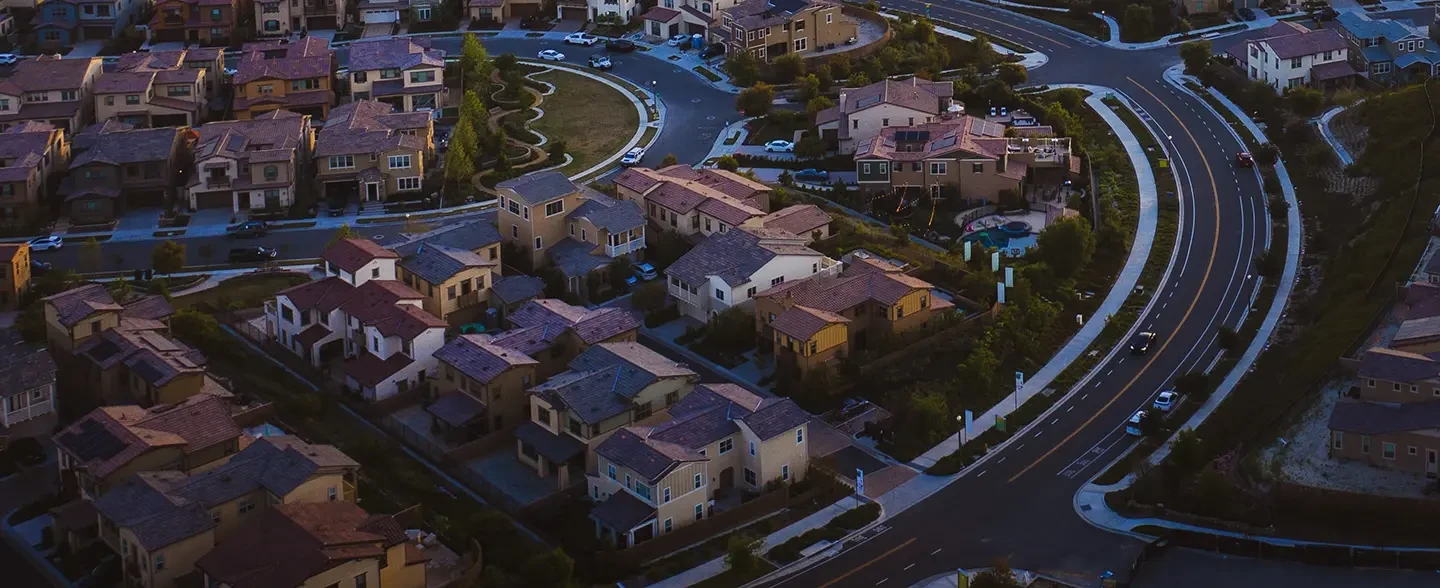In California, Homeowners Associations (HOAs) play a pivotal role in managing residential communities. They are governed by a set of rules and regulations designed to maintain property values and ensure harmonious living among residents. Central to these regulations are the Covenants, Conditions, and Restrictions (CC&Rs), which outline the rights and obligations of homeowners within the community.
Here, you’ll find CC&Rs explained, their legal framework, and their implications for homeowners in California. Whether you're a new homeowner or have been part of an HOA for years, understanding these HOA restrictions California is crucial to navigating your rights and responsibilities effectively.
What Are CC&Rs?
CC&Rs are legally binding documents recorded with the county recorder’s office that establish the rules and guidelines for properties within an HOA. They serve as the "constitution" of the HOA, setting forth the standards and expectations for homeowners to promote uniformity and protect property values.
The primary purposes of CC&Rs include:
Maintaining aesthetic consistency within the community
Ensuring proper maintenance of properties and common areas
Facilitating dispute resolution among homeowners
Outlining assessment obligations and enforcement mechanisms
Key Components of CC&Rs
Understanding the core elements of CC&Rs is essential for homeowners:
Use Restrictions: These dictate how properties can be used, including limitations on modifications, occupancy, and activities that may affect the community's harmony.
Maintenance Obligations: CC&Rs specify the responsibilities of homeowners and the HOA regarding property upkeep, ensuring that all areas are well-maintained.
Enforcement Mechanisms: They outline the procedures for addressing violations, including the imposition of fines and other penalties.
Assessment Obligations and Lien Rights: Homeowners are required to pay assessments for the maintenance of common areas, and CC&Rs detail the HOA's rights to place liens for unpaid dues.
Legal Framework Governing CC&Rs
The Role of the Davis-Stirling Act
The Davis-Stirling Common Interest Development Act (California Civil Code §§4000–6150) is the primary legal framework governing HOAs in California. It standardizes the creation and operation of HOAs, ensuring transparency and fairness in their governance. Key provisions include:
Applicability: The Act applies to all residential common interest developments in California, regardless of when they were established.
Governance: It outlines the powers and duties of HOA boards, including meeting requirements, voting procedures, and record-keeping.
Assessments and Finances: The Act regulates how assessments are levied and collected, promoting financial accountability.
Dispute Resolution: It provides mechanisms for resolving disputes between homeowners and HOAs, including alternative dispute resolution processes.
Interaction with the Fair Housing Act
HOAs must ensure that their CC&Rs comply with the Fair Housing Act, a federal law prohibiting discrimination in housing-related activities. This means that any provisions within CC&Rs that discriminate based on race, color, national origin, religion, sex, familial status, or disability are unenforceable. HOAs are also required to make reasonable accommodations for individuals with disabilities, even if such accommodations would otherwise violate the CC&Rs.
Essential Aspects Of CC&Rs
Property Maintenance Requirements: CC&Rs establish standards for property maintenance to preserve the community's appearance and value. These standards may include guidelines for landscaping, exterior paint colors, and structural integrity. Homeowners are typically responsible for maintaining their individual properties, while the HOA manages common areas.
Architectural and Aesthetic Guidelines: To maintain a cohesive look within the community, CC&Rs often include architectural guidelines. These may restrict certain modifications, such as additions or changes to the exterior appearance of homes. Homeowners usually must seek approval from an architectural review committee before making significant changes.
Use and Management of Common Areas: CC&Rs define the rules for using common areas, such as pools, parks, and clubhouses. They specify the HOA's responsibilities for maintaining these areas and may set forth usage guidelines to ensure that all residents can enjoy them safely and equitably.
Financial Implications For Homeowners
Understanding Assessments and Fees
Homeowners in an HOA are required to pay regular assessments, which fund the maintenance and operation of common areas and community services. In some cases, special assessments may be levied for unexpected expenses or major projects. CC&Rs detail the procedures for levying assessments and the importance of maintaining reserve funds for future needs.
Fines and Penalties for Non-Compliance
When homeowners violate CC&Rs, the HOA may impose fines as a form of enforcement. However, homeowners have rights, including the right to receive notice of the violation and an opportunity for a hearing. There are legal limits on the amount and enforcement of fines, ensuring that penalties are fair and reasonable.
Navigating The Hierarchy Of HOA Documents
In California, HOA governance is structured through a hierarchy of documents, each serving a specific purpose and holding varying degrees of authority.
Differences Between CC&Rs, Bylaws, and Operating Rules
CC&Rs (Covenants, Conditions, and Restrictions): These are the foundational documents that outline property use restrictions, maintenance obligations, and enforcement mechanisms. They are recorded with the county and are legally binding on all homeowners.
Bylaws: Bylaws govern the internal operations of the HOA, detailing the structure of the board, election procedures, meeting protocols, and the duties of board members.
Operating Rules: These are the day-to-day guidelines that address specific issues like parking regulations, pool usage, and pet policies. Operating rules must align with the CC&Rs and Bylaws and can typically be amended by the board with proper notice to homeowners.
Importance of Understanding Each Document's Role
Recognizing the function and authority of each document is crucial:
Hierarchy: In the event of a conflict, the hierarchy is as follows: CC&Rs take precedence over Bylaws, which in turn take precedence over Operating Rules.
Amendment Procedures: Amending CC&Rs often requires a vote by the membership, while Bylaws and Operating Rules can sometimes be amended by the board, depending on the provisions within the governing documents.
Homeowner Rights And Responsibilities
Participation in HOA Elections
Homeowners have the right to participate in the democratic processes of their HOA:
Voting Rights and Eligibility: Each homeowner is typically entitled to one vote per unit owned, allowing them to influence decisions that affect the community.
Running for Board Positions: Homeowners may also choose to run for a position on the board, contributing to the governance and direction of the HOA.
Importance of Active Participation: Engaging in elections and meetings ensures that homeowners have a voice in decisions that impact their property and community.
Addressing and Resolving Disputes
Disputes within HOAs can arise, and homeowners should be aware of the mechanisms available for resolution:
Internal Dispute Resolution Mechanisms: Many HOAs have established procedures for resolving conflicts internally, often involving mediation or hearings.
Alternative Dispute Resolution Options: If internal mechanisms fail, homeowners may pursue alternative dispute resolution methods, such as arbitration or mediation, outside the HOA.
Legal Remedies and When to Seek Legal Counsel: In cases where disputes cannot be resolved through internal or alternative means, homeowners may need to seek legal counsel to protect their rights and interests.
Recent Legislative Updates Affecting CC&Rs
New Amendments and Their Impacts
California's legislative landscape for HOAs is continually evolving:
Virtual Meetings: Recent amendments, such as AB 648, allow HOAs to conduct meetings entirely virtually under certain conditions, enhancing accessibility for homeowners.
Reduced Quorum Requirements: Changes to the Davis-Stirling Act have introduced reduced quorum options for adjourned membership meetings, facilitating smoother governance processes.
Changes to Governance and Rental Practices
Legislation has also addressed rental restrictions within HOAs:
Rental Caps: Associations are now required to conform to statutory rental caps, limiting the number of units that can be leased to no more than 25% of the total units.
Lease Terms: Governing documents mandating lease terms longer than 30 days may be unenforceable unless they meet specific criteria, ensuring fair rental practices.
Ensuring Compliance And Fostering A Harmonious Community
Strategies for Maintaining Compliance
Proactive measures can help maintain compliance and community harmony:
Education and Communication: Regularly educating homeowners about the governing documents and any changes promotes understanding and adherence.
Regular Reviews and Updates of Governing Documents: Periodically reviewing and updating CC&Rs, Bylaws, and Operating Rules ensures they remain relevant and legally compliant.
Role of the HOA Board and Management
The board and management play pivotal roles in enforcing rules and maintaining community standards:
Enforcement of CC&Rs and Other Governing Documents: The board is responsible for enforcing the rules fairly and consistently, addressing violations promptly.
Balancing Enforcement with Community Relations: While enforcement is necessary, the board should also strive to maintain positive relationships with homeowners, addressing concerns with empathy and transparency.
Seeking Legal Advice When Necessary: In complex situations, consulting with an experienced HOA lawyer California; can provide guidance and ensure that actions taken are legally sound.
Get Legal Support On HOA CC&Rs in California To Protect Your Property Rights With LS Carlson Law
Understanding the complexities of HOA CC&Rs in California is essential for homeowners seeking to protect their property rights and maintain community harmony. Understanding the hierarchy of governing documents, your rights and responsibilities, and recent legislative updates empowers you to make informed decisions and address potential disputes effectively.
At LS Carlson Law, we specialize in providing comprehensive legal support on California HOA rules and CC&Rs. Our experienced team is dedicated to assisting homeowners in interpreting HOA restrictions in California, ensuring compliance, and resolving conflicts with confidence.
If you're facing challenges with your HOA or need clarity on your CC&Rs, contact LS Carlson Law today. Our experienced HOA lawyers in California are here to provide the guidance and representation you need.

Tell Us About Your HOA Dispute
When you hire LS Carlson Law, you can be assured you’ll be getting an aggressive firm fully dedicated to achieving your legal objectives. Don’t take our word for it, we encourage you to take a look at the numerous five-star client reviews. Call us now or fill out the form to set an appointment.



